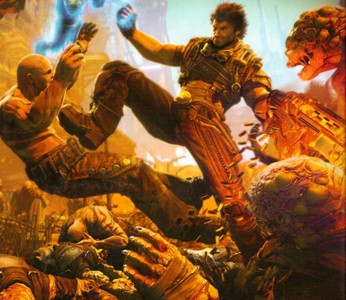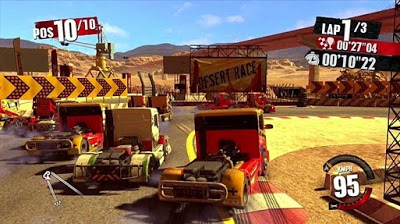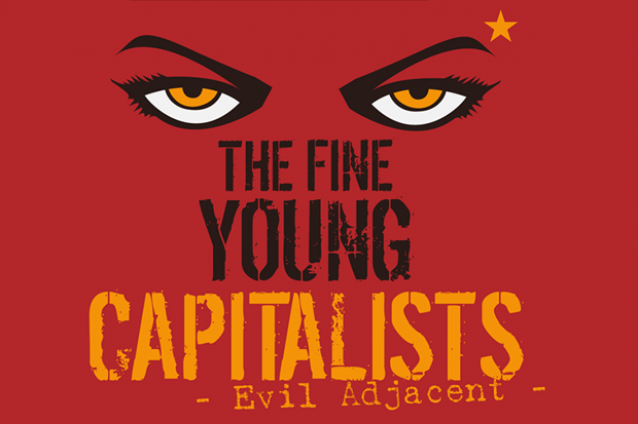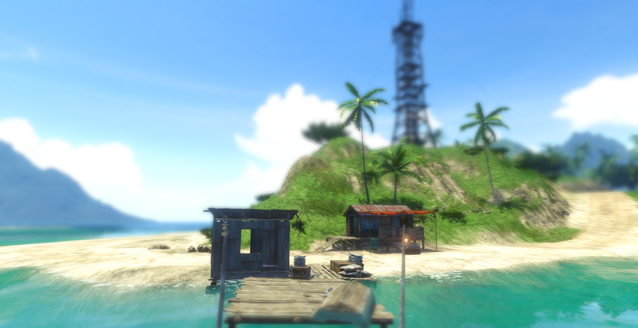

Since the very first minute that Ubisoft revealed Child of Light – a hand-painted, side-scrolling RPG from the team behind Far Cry 3 – game enthusiasts knew that it was not only intriguing from a corporate/triple-A/publisher perspective, but had the potential to be a truly unique experience. While the finished game may not be a masterpiece, the developers have made good on that expectation, and shown that ‘indie sensibility’ is matter of intent and design, not budget.
The stunning watercolor style of the game was the first feature to turn heads, relying on the same UbiArt Framework that brought the vibrant worlds of Rayman Origins to life (and may do the same for Prince of Persia as well). The finished results don’t disappoint, with the love of fairy tale fantasy and supporting cast giving one of the best sensations in gaming to date of strolling through the pages of a children’s book.
Child of Light‘s story makes the inspirations clear as well, set in Austria in 1895. All is well until the king’s young daughter, Aurora, falls asleep one night and refuses to wake with the dawn. Instead, she rises to find herself in the mysterious land of Lemuria, a once-great world which (stop us if you’ve heard this one before) has fallen into darkness and terror under the rule of the evil Queen of the Night.
It is Aurora’s mission to free the Moon, the Sun and the Stars from the Queen’s clutches, battling armies of her fierce and grotesque creatures along the way in hopes of returning to her father. And for most of the game, the time and energy placed in making Aurora a fitting heroine shines through. The story itself isn’t treading new ground, but by calling on centuries of folk tales, Child of Light exhibits a far less abstract story than games like Limbo or Braid, while still capable of engaging younger players. In fact, younger players may be the ones to find the most enjoyment in Child of Light‘s plot and premise.
We say ‘enjoyment,’ since the entirety of the game is steeped in a somber, solemn atmosphere that sits like a haze over the beautiful landscapes and architecture Ubisoft’s artists have concocted. That overall mood is heightened by the musical score, giving Aurora’s quest a downright tragic nature – the kind children seem somehow immune to in all other stories, books, or films they may encounter.
Although the game begins by dropping Aurora into the world of Lemuria with little direction – expanded upon when players receive the ability to fly, revealing a sprawling world in nearly every direction – Child of Light is far from a laid-back think-piece. Aurora must eradicate the darkness, after all, and that means combating all manner of monsters. And it is in the combat system that the gameplay inspirations become perfectly clear.
Enough time has passed for the shock of seeing the watercolor art matched with turn-based combat to have worn off, and while the division between the game’s story and style and the combat may be more defined than we would have hoped, the fundamental systems are well-handled. Die-hard JRPG enthusiasts may not break a sweat, but those expecting a walk in the park – dominating enemies with little effort – are in for a rude awakening.
Recently, games like South Park: The Stick of Truth have sought to make classic turn-based combat more approachable to the uninitiated. Child of Light begins with the intention of doing just that, but the intricacies of the system soon rise to the surface, offering an experience that may prove both maddening and exhilarating to different players.
In combat, Aurora and another Party member (which can be swapped out at will) square off against 1-3 enemies. Instead of simply following an order of attacks (or turns), icons of each fighter move along a time bar placed at the bottom of the screen. Once a fighter’s icon reaches the ‘Cast’ point, the game freezes, allowing the player (and their enemy) to select which action to take.
The simple layout disguises a refined amount of depth, as characters not only move from attack to attack with greater speed (helped or hindered by potions or spells), but more powerful spells take longer to execute. If an enemy still moving through the ‘Casting’ phase is struck, their attack is interrupted, and they drop back in progression.
Adding another dimension to the combat is Aurora’s trusty Firefly, Igniculus, who moves from lighting dark caverns or stunning enemies in the open world to a potent ally in combat. Igniculus can be moved over allies to heal them (using the right analog stick), but his ability to slow enemy progression is far more valuable. His powers are limited, however, replenished with either potions or gathering ‘Wishes’ from nearby plants.
The end result is a straightforward combat system that requires players manage several time-based mechanics at once: slow all enemies enough to keep them in the Casting phase when you fire an area-of-effect attack, and they’re all interrupted. Slow them too much, and they won’t be – throwing off the pace of the next several ‘turns.’ The juggling of the mechanics is an interesting challenge at the start, but for some reason, the thrill soon wears off, meaning players will soon realize that a towering climb lies before them just to continue their march through this interactive piece of art.
The combat system is not grueling or punishing, but with literally hundreds of encounters spread throughout the game, players will need to enjoy them to stay engaged. Unfortunately, the extensive Skill Trees and Leveling seem over-designed in ways that small development teams rarely encounter, and do little besides improving basic stats. A crafting system allows players to tailor weapons for specific enemy types, but it too feels somehow at odds with the slimmed-down nature of the combat.
Outside of combat, the traversal from Earth to Sky and beyond is livened up with some minor puzzles, and a classic platformer brand of navigating hazards. None of these are too taxing and a welcome change of pace, with potions and power-ups constantly discovered. But the fact remains: players are asked to not simply enjoy their time with the charming story and characters, or the combat, but both.
It’s hard to imagine players drawn to the game who won’t be willing to perfect their combat skills in exchange for moving through the many environments and unique locations the developers have created, and even harder to imagine the team having found a better balance while doing justice to both. But in the end, Child of Light is tasked with serving two masters, not one.
Players attracted to the visuals and style may be alarmed to find the combat so frequent (and the writing uneven), but anyone even mildly interested in JRPG combat should give this game a look. Issues aside, it’s a clear sign that even big-budget studios can stray from the beaten path with success. And there is no doubt many players will fall in love with its blend of whimsical storytelling, engaging combat, and an attention to detail that deserves particular appreciation.
_____
Child of Light is available now for the PC, PS3, PS4, Xbox 360, Xbox One and Wii U. Game Rant played the Xbox One version.
Follow Andrew on Twitter @andrew_dyce.




 How to get more Attunement Slots in Dark Souls 2
How to get more Attunement Slots in Dark Souls 2 The Fine Young Capitalists’ Seemingly Noble Goals Don’t Excuse them from Scrutiny
The Fine Young Capitalists’ Seemingly Noble Goals Don’t Excuse them from Scrutiny Counter Strike: Global Offensive Weapons Guide
Counter Strike: Global Offensive Weapons Guide Top 5 Legend of Zelda Games: #2
Top 5 Legend of Zelda Games: #2 Far Cry 3 Exploration, Hunting, And Crafting Guide
Far Cry 3 Exploration, Hunting, And Crafting Guide